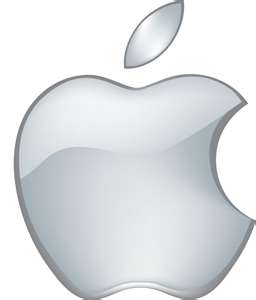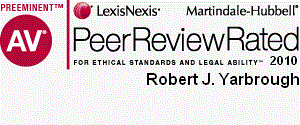Newsletter Issue 79 - September 2015
In this issue:
Copyrights and non-humans
Copyright fair use
Patent injunctions
Ask Dr. Copyright ...
Dear Doc:
I heard that there is almost never a final step in the onward march
of copyright law. What, exactly, does that mean?
Signed,
Dazed and Confuzed
Dear D&C:
It means that, as the late, great Yogi Berra (may he forever whisper
in the Almighty's ear) said, "It ain't over 'till it's over!"
For instance, you may remember that the Doc wrote about the monkey
who took a "selfie" and how the Copyright Office then made a rule
that only humans could be authors and have copyrights. Well, in
addition to offending self-respecting monkeys everywhere, as well as
painting elephants and poetic pigeons, this ruling seems to have
offended the good humans at the People for the Ethical Treatment of
Animals (PETA). Filing as "Next Friends",
PETA has set in motion a
federal lawsuit by Naruto (that's what the monkey says his name is)
against the fellow who lost, and later recovered the camera, and who
then found the monkey selfies and sold them. PETA says that Naruto,
even though a non-human, should have property rights and that PETA
should be allowed to "administer and protect" those rights so that
any profits may be used "solely for the benefit of Naruto, his
family, and his community, including the preservation of their
habitat...".
Now the "Doc" is no monkey expert, but having read the Copyright
Statute (17 USC §101 et seq.) he can find no definition of "author"
that says "only humans". In the onward march of equal rights for
all, provided that the courts will allow standing and exercise
jurisdiction (not a small provided), we may yet see a parade of
copyright-holding creatures. The Doc looks forward to defending the
rights of a veritable circus parade of orating orangutans, poetic
pigeons, yodeling yaks, cinematic simians, painting pandas,
sculpting salamanders, and lyrical llamas.
On another update, a federal judge in Los Angeles ruled last week
that the song "Happy Birthday to You" is not validly protected by
copyright. The story is long (it took the judge 43 pages to say
that) but it seems that the music copyright expired long ago, and
the words were published without a valid copyright notice, which was
fatal under the 1909 Copyright Act (but not anymore since the law
was changed in 1976.) What does this mean? First, the Doc thinks
that Warner, the copyright owner, may appeal since it rakes in $2
million a year from the song. The law may change, yet again. Second,
until they do, you may expect a remarkable reduction in the number
of cheesy happy birthday song substitutes sung by restaurant
wait-staff all over the world!
Have another question about intellectual property rights? Want an
answer that will certainly be correct today, but maybe not so much
once the courts and Congress change the law next week? Ask the
attorneys at LW&H - they will give you the straight scoop.
Until next month...
The Doc
Let's Go Crazy and Support "Fair Use"
In 2007, Stephanie Lenz posted a cute 29-second YouTube video of
her 13-month-old son dancing and giggling to the music of Prince's
"Let's Go Crazy". Four seconds into the video Lenz asks her baby
"what do you think of the music?" And the baby bobbles up and down
holding his push toy.
Then, big bad Universal Music Publishing Company spoiled all the fun
and sent a takedown notice to YouTube, asserting, "We have a
good-faith belief that [Lenz's video] is not authorized by the
copyright owner, its agent, or the law" to play Prince's music.
In
other words, Lenz was an infringer. Lenz was outraged and filed a
counter-notice, which Universal Music successfully resisted on
technical grounds. Lentz obtained counsel and filed yet a second
counter-notice, asserting that her video constituted "fair use."
You may recall from our previous posts that "fair use" under the
U.S. Copyright Act, permits limited use of copyrighted works for
purposes of "criticism, comment, news reporting, teaching,
scholarship, or research." In response to the second
counter-notice, YouTube restored Lenz's video.
Her outrage undiminished, Lenz joined forces with the Electronic
Frontier Foundation (EFF) and sued Universal Music alleging damages
for misrepresentation under § 512 (f) of the US Copyright Act. The
parties eventually filed cross motions for summary judgment on the
misrepresentation claim, the court denied both motions, and the
parties appealed to the United States Circuit Court of Appeals
(Ninth Circuit).
Now, eight years later, the baby no longer a baby, the
Ninth Circuit
rewarded Lenz by holding that Universal music - - or anybody sending
a takedown notice - - is required to consider fair use in its
assessment of whether the offending video is an infringement. The
Ninth Circuit wrote: [A]nyone who . . . makes a fair use of the work
is not an infringer of the copyright with respect to such use." In
the words of the EFF:
"The big takeaway of [the] opinion is, yes, that copyright holders
must consider fair use before sending a takedown notice. But just as
important is the basis of that conclusion: again today we have a
federal court making it clear that fair use is not just a carve-out
of the copyright system but a right on the same level of those
described in the rest of the statute."
While this may not sound like a big deal, the Ninth Circuit's
opinion has important implications for digital media and freedom of
expression. Digital media providers such as YouTube receive
thousands of takedown notices many of which leave us scratching our
heads over whether the offending work was really infringing. See
these five notable takedowns that fall in that category.
But don't leave this post believing that Lentz walked away with a
windfall or that Universal music and other copyright owners have
been chastened by the Ninth Circuit's decision despite the EFF's
praise of the opinion. Probably not.
First, the court held that Lentz was only entitled to nominal
damages. The Ninth Circuit left it to the lower court to determine
whether her court costs and pro bono fees are recoverable.
Second, copyright owners are now required to consider fair use but
whether they do so will be judged on a subjective basis, meaning
that "a jury must determine whether [the copyright owner's] actions
were sufficient to form a subjective good faith belief about the
video's fair use or lack thereof." Subjective good or bad faith must
be proven from from the point of view of the copyright owner whether
or not those acts are objectively reasonable. A difficult burden,
indeed!
Need help with a takedown notice? LWH lawyers can help and they will
consider fair use.
When will a Federal court order a patent infringer to stop
infringing?
Apple and Samsung have been fighting for years over copying by
Samsung of patented features of Apple's iPhone and iPad. The
features at issue in
a recent
Apple v Samsung case before the Federal Circuit Court were
swipe-to-unlock, telephone number recognition, and spelling
correction. A jury found that Samsung actively copied these
features and infringed the patents and awarded Apple $119 million in
damages for the infringement.
Apple then asked the trial court to issue an injunction (court
order) directing Samsung to stop infringing. Apple did not ask
that Samsung stop selling phones and tablet computers, only that
Samsung remove the infringing features from its phones and tablets.
Prior to 2006, such a request almost certainly would have been
granted; however, in that year the Supreme Court decided
eBay v
MercExchange. In eBay, the Supreme Court determined that a patent
owner is entitled to a court order stopping infringement only if the
patent owner can show 'irreparable injury' from the infringement,
among other things.
The trial court found that the features at issue were important to
Apple's high-risk development and launch of the iPhone and the iPad,
but nonetheless denied Apple's request. The trial court concluded
that Apple did not show 'irreparable injury' because Apple did not
show that the patented features were the sole cause of Apple's loss
of sales to Samsung. The Federal Circuit Court reversed, holding
that showing that a single feature is the sole reason that someone
buys a smartphone or tablet computer is impossible where the
smartphone or tablet may have hundreds of thousands of features.
The Federal Circuit said that the patent owner need only
demonstrate the infringing feature 'impacts customer's purchasing
decisions' and that Apple demonstrated through surveys and other
evidence that customers did base purchasing decisions on the
patented features. The two-judge majority remanded to the trial
court to issue the injunction, over a spirited dissent.
We have not seen the last of this case.

